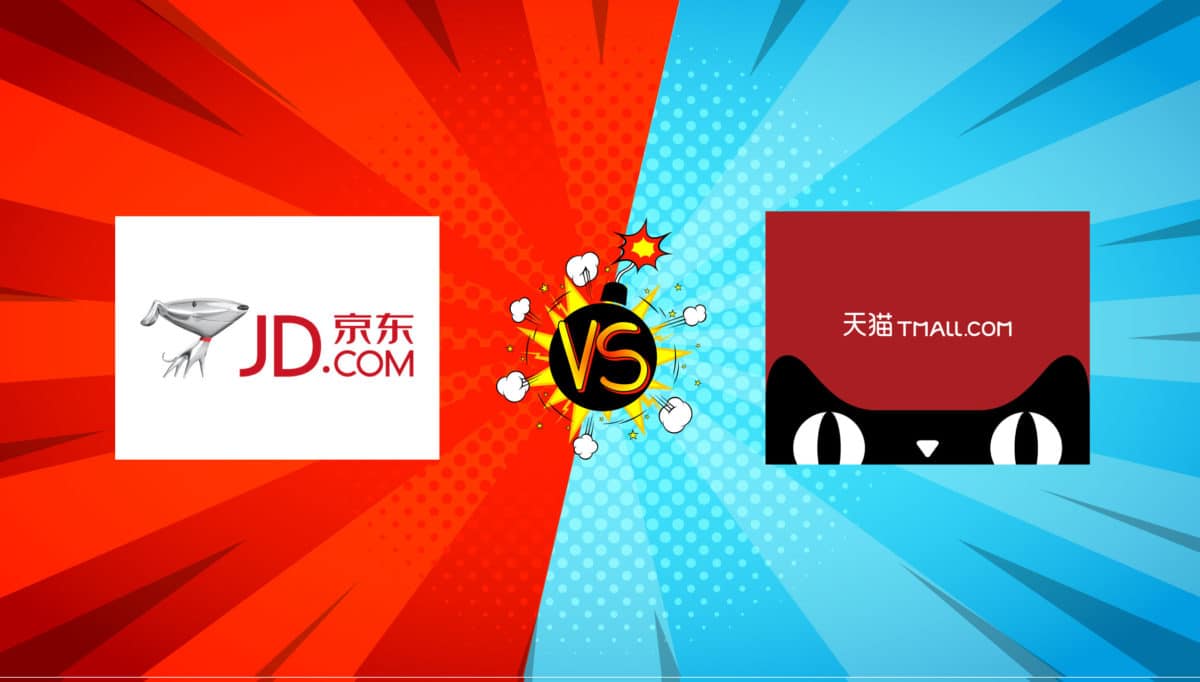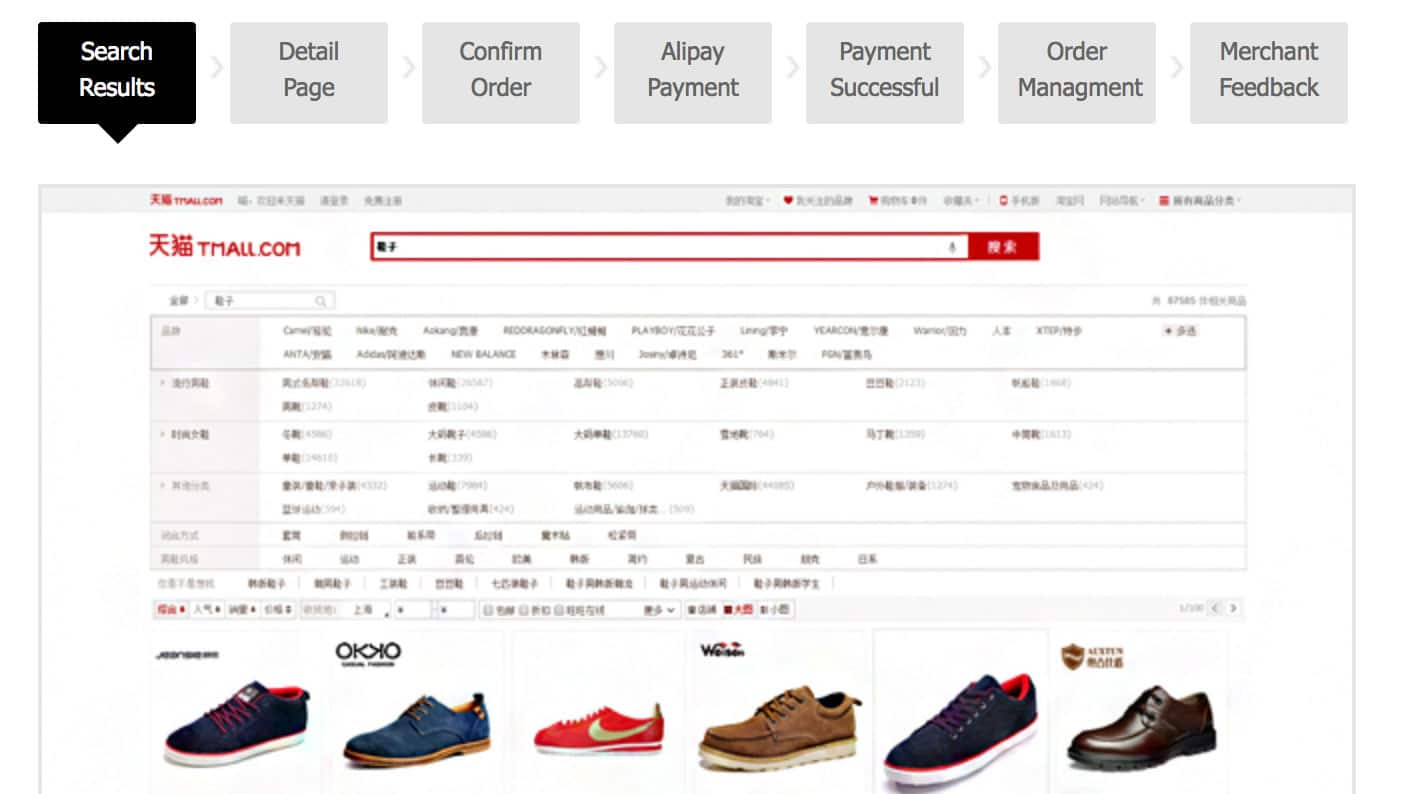Overview of the e-commerce market in China
It is impossible to talk about e-commerce in China without mentioning the 800-pounds Gorillas: Alibaba group founded by the iconic entrepreneur Jack Ma, and its close competitor JD.com.
Alibaba is a group including many companies:
- Alibaba.com, the largest B2B e-commerce platform in the world
- Taobao.com, China’s largest C2C platform
- Alipay is China’s largest e-payment platform
- Aliyun which is China’s largest cloud computing platform
- AliExpress which is helping Chinese companies sell to foreign buyers
- AliHealth is the most comprehensive online retailer of pharmaceuticals in China
- Lazada is the leading e-commerce platform in South East Asia
But the most interesting part of Alibaba is Tmall, the largest B2C platform in China, engaged in a lethal fight with its main competitor JD.com. As of 2016, Tmall made up for 57% of B2C e-commerce in China.
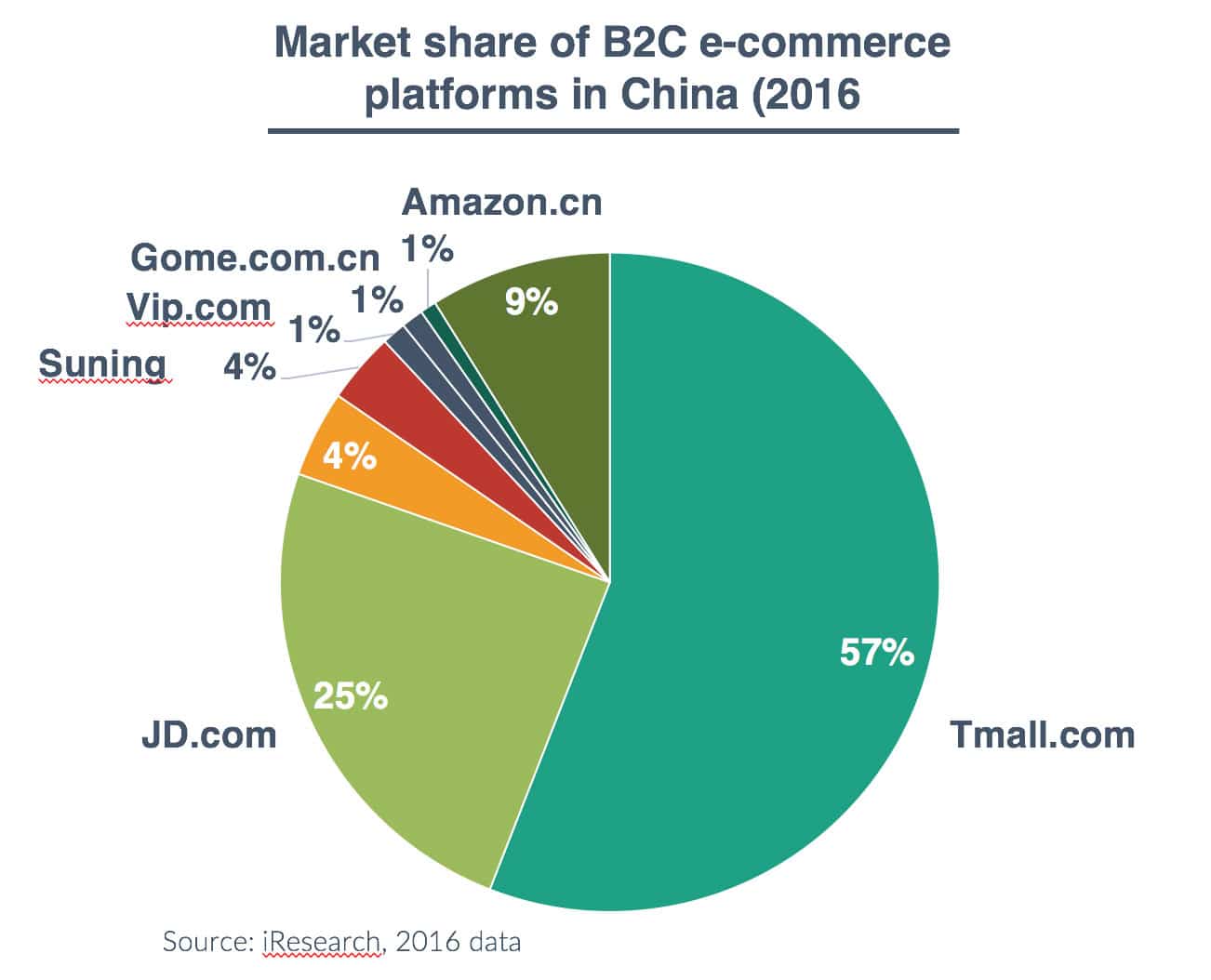
JD.com was a clear second with 25% market share. All the other actors shared the remaining 18% of the market (Amazon only has a 1% market share in China).
But the difference between Tmall and JD.com is not only about scale: they also target different markets. Buyers will generally go to Tmall for clothes, cosmetics and F&B purchases, while JD.com will be the number one choice for purchases of home appliances and electronic equipment.
In terms of fees, Tmall and JD.com are comparable, although JD.com tends to charge slightly more expensive fees.
Regarding payment methods, Tmall supports Alipay and Bank cards (Alipay being much more popular) and JD.com supports WeChat Payment, JD Pay and bank card (WeChat Pay being the most popular option)
| Tmall | JD.COM | |
| Main categories | Clothes, cosmetics, F&B, etc. | Home appliances & electronics |
| Transaction fee | 3% to 7% | 5% to 8% |
| Management fees | ~ USD 1,000 / year
+ $2,000 to $15,000 USD deposit |
~ $1,500 to $10,000 USD / year
+ $8,000 to $50,000 USD deposit |
| Payment methods | Alipay & bank cards | WeChat Pay, JD pay & bank cards |
Focus on cross-border e-commerce in China
Although Tmall and JD.com are completely dominating the local e-commerce market, the cross-border e-commerce market is much more fragmented.
Here is data from H1 2017 cross-border e-commerce market share in China:
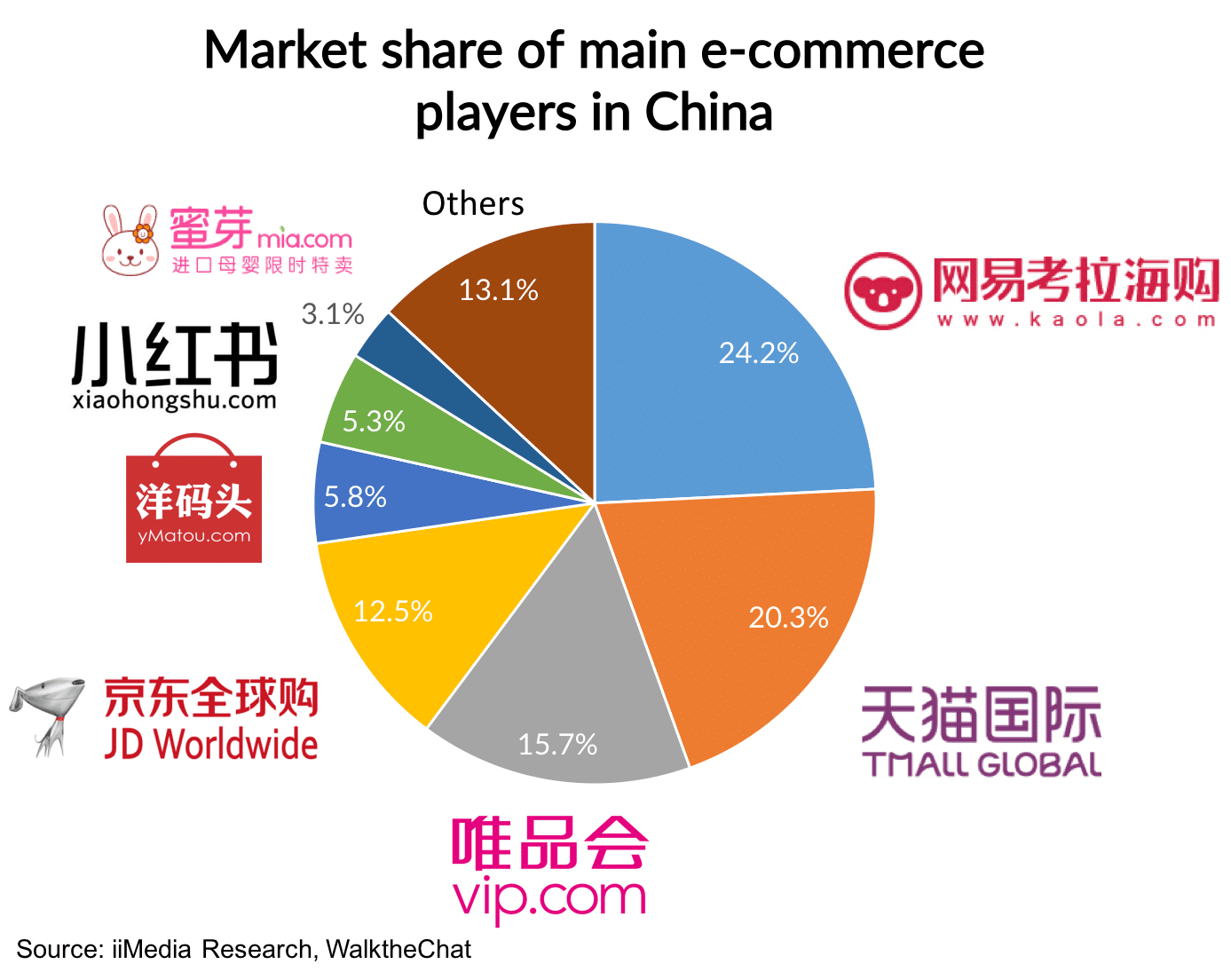
On top of Tmall and JD, smaller & newer players such as Kaola, VIP.com, YangMaTou and XiaoHongShu are also taking on a significant share of the market. This is partly due to the fact that cross-border sales are linked to some more targeted promotions toward smaller brands. Storytelling is also more important, and platforms like XiaoHongShu managed to leverage this trend by blending content and e-commerce.
These cross-border orders are mostly coming form other Asian countries such as Japan and Korea, with United States being a close follower:
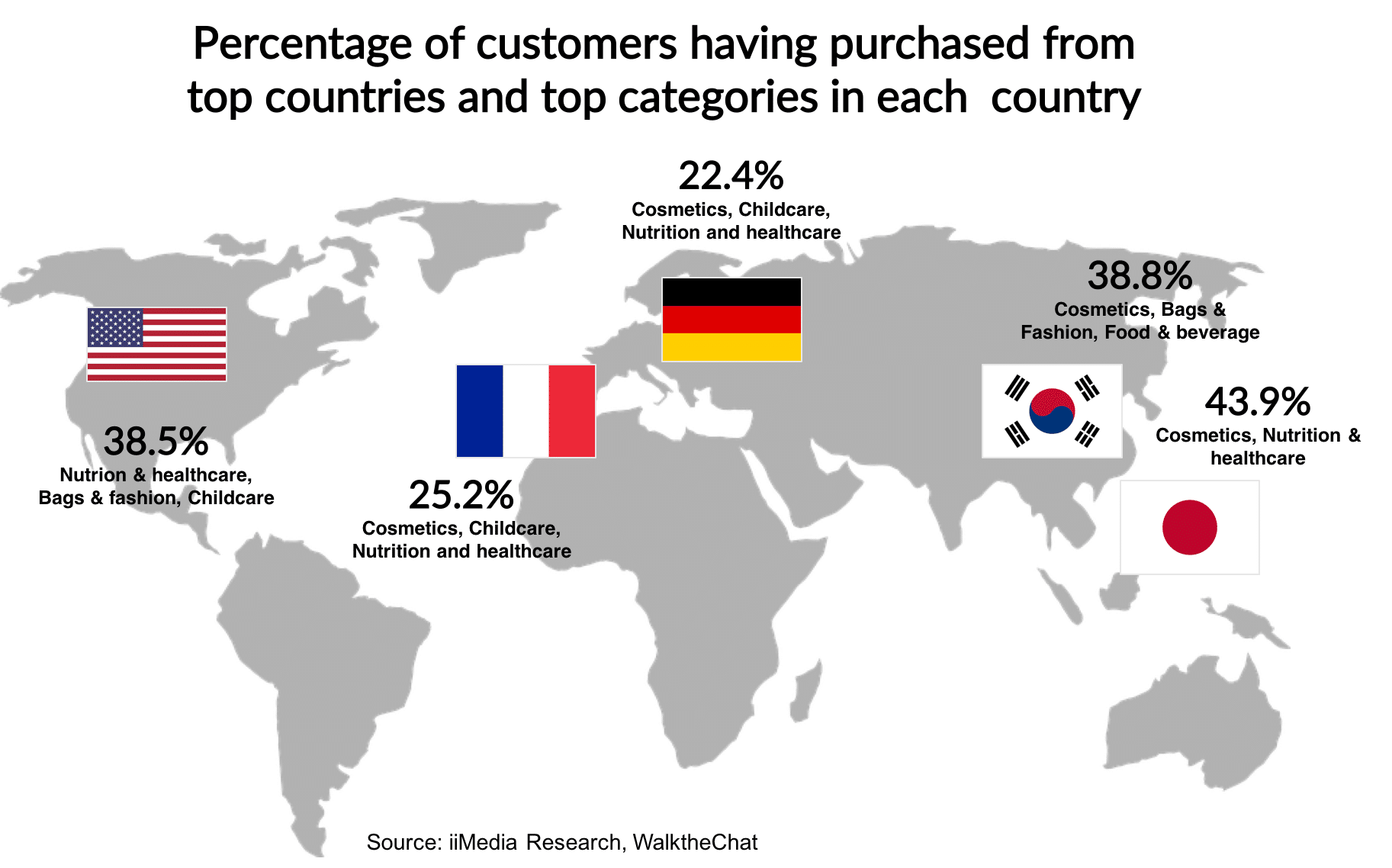
Cross-border purchases are also relatively frequent, with 65% of Chinese e-commerce users making at least one cross-border purchase every month.
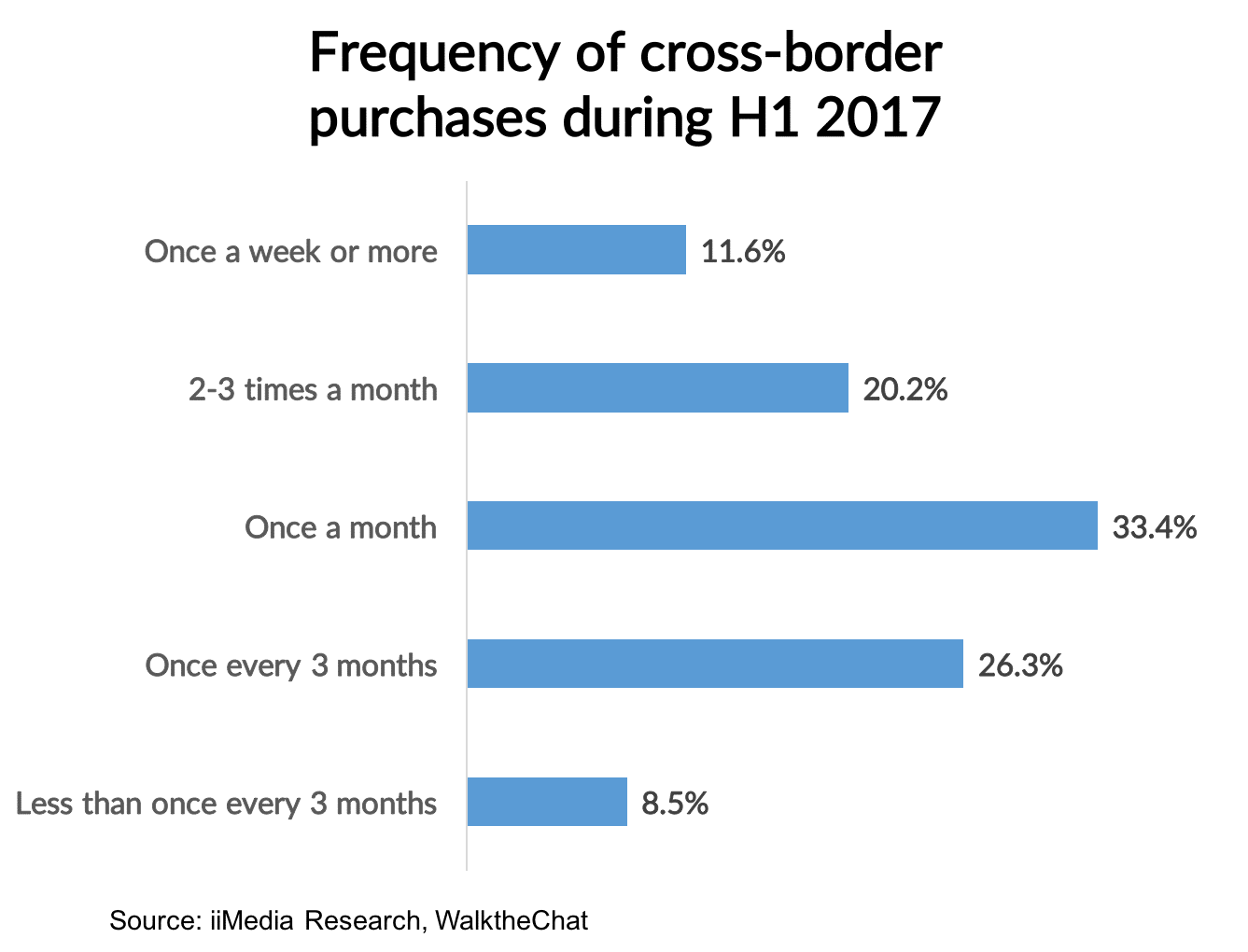
What does Tmall look like?
Tmall both follows and (to a large extend) defined the standards of e-commerce in China. Selling in China therefore requires a good understanding of what are these standards and expectations from Chinese customers.
Fortunately, Tmall set-up a page explaining the typical user experience on the platform, from product discovery to delivery. You can access it via this link: http://about.tmall.com/tmall/consumer_experience
There are also standards to follow when it comes to designing for Tmall. Some of the rules to follow are:
- Large number of pictures extending through the page: a Western website might only have 2 to 5 pictures of each product. But in China, users expect extensive product descriptions with dozens of pictures. Pictures typically include images of the packaging, the picture being used, and the way it was shipped to the customer (warehouses, etc.)
- Clear description of what makes the product different: the e-commerce landscape in China is extremely competitive, and you need to spend more time putting emphasis on what makes the product special. This can be done through quantitative characteristics of the product, or by creating a story around your brand & product
- Certificates of authenticity: although this might seem weird on a Western website, it is usual in China to put pictures of the certificates of authenticity fo the product. If you are re-selling a third party brand, then upload a scanned version of your reseller agreement in order to reassure users
Here’s an example of a top-selling Tmall product (a Casio watch): as you can see, the product page contains images of the product from multiple different angles, many of them showing the product being used.

Merchant workflow
Tmall followers a complex merchant workflow from order to delivery. Here’s a detailed (but complicated) chart describing this process (note that the chart applies to local Tmall merchants and that the workflow for cross-border orders might differ from the process outlined below)
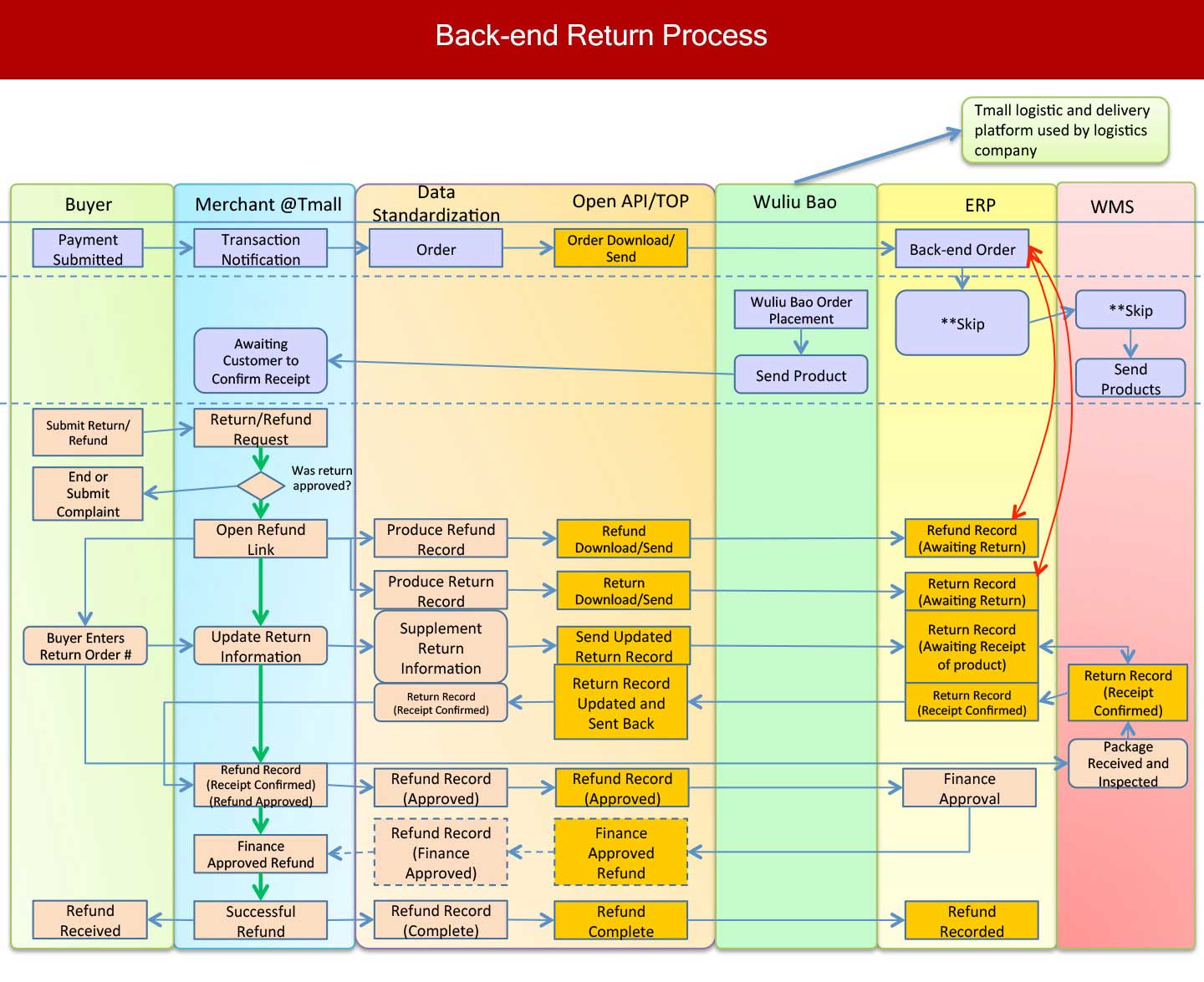
How can foreign companies sell cross-border on Tmall or JD.com?
Both Tmall and JD.com have their own cross-border platforms enabling foreign businesses to sell directly to China: Tmall Global and JD Worldwide.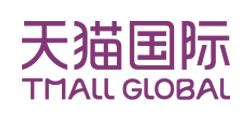

Listing the products on these platforms is actually not a simple process for foreign brands. In order to be eligible for Tmall, brands must meet the following criteria:
- More than US $100,000,000 in yearly revenue (yes, that’s 100 million USD)
- Large search volume in China (especially on Taobao)
- In the case of Tmall, it is a requirement to work with a TP (Tmall Partner) who will help operate the store and take a share of the revenue
- Give a clear business plan and investment plan for entering China (most Tmall partners suggest $1M of investment during the first year in order to get a chance to be successful)
JD.com is a bit more flexible in terms of receiving and processing applications from foreign businesses, but the requirements are similar. In the case of Tmall, Alibaba uses an internal monitoring and scoring system and usually directly reaches out to brands that they would like to help sell cross-border.
And although Tmall and JD.com are popular platforms in China, this doesn’t mean that having your products listed will result in any sales. Actually, more often than not, companies listing their products on JD or Tmall don’t get any results.
Success of Tmall and JD will depend on your overall marketing strategy, which might include traditional PR, programmatic advertising, influencer marketing and of course the choice of a good Tmall Partner.
So, how can you know if you have a chance to be accepted by Tmall Cross-border, and that you mightl get significant sales once listed?
How to know if you’re ready to sell on Tmall and JD.com?
As I mentioned, you’re more likely than not to get turned down by Tmall or JD.com when applying. So how to get a sense of your chances, in order to not waste your time?
Criteria #1: Daigou sales
Daigou (代购) is a popular trend in China: it is the phenomenon of Chinese people living abroad and bringing back goods during their trips to China, which are then sold on B2C marketplaces like Taobao.
For some brands, Daigou sales might represent thousands or monthly sales, sometimes even more. However, these are tricky sales channel as the brand loses contact with all customer service and with any control over the user experience.
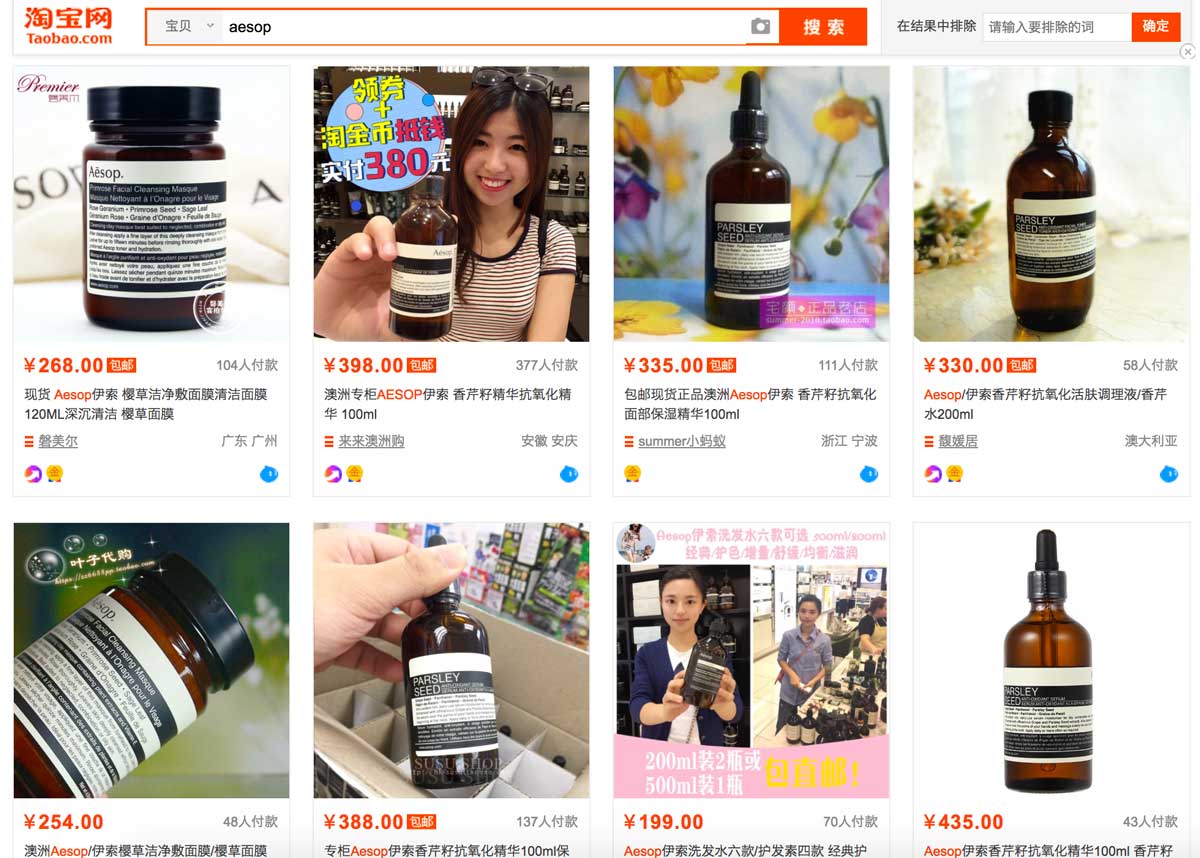
Daigou are however a great indicator of your potential sales in China: checking the sales volume from Daigou gives you a clear indicator of your search volume on Taobao, and therefore of the success of a potential Tmall store.
In order to search for Daigou sales, simply enter your brand name on Taobao.com
Criteria #2: WeChat Index
Tmall is very search-driven, but a search on Tmall is usually not the first step in the buyer’s journey. Customers have to hear about you, and it’s quite possible they did so via social media.
You can check your WeChat Index in order to get a sense of your popularity on China’s largest social App. The measure doesn’t mean much in itself, but can be interesting if comparing with your main competitors.
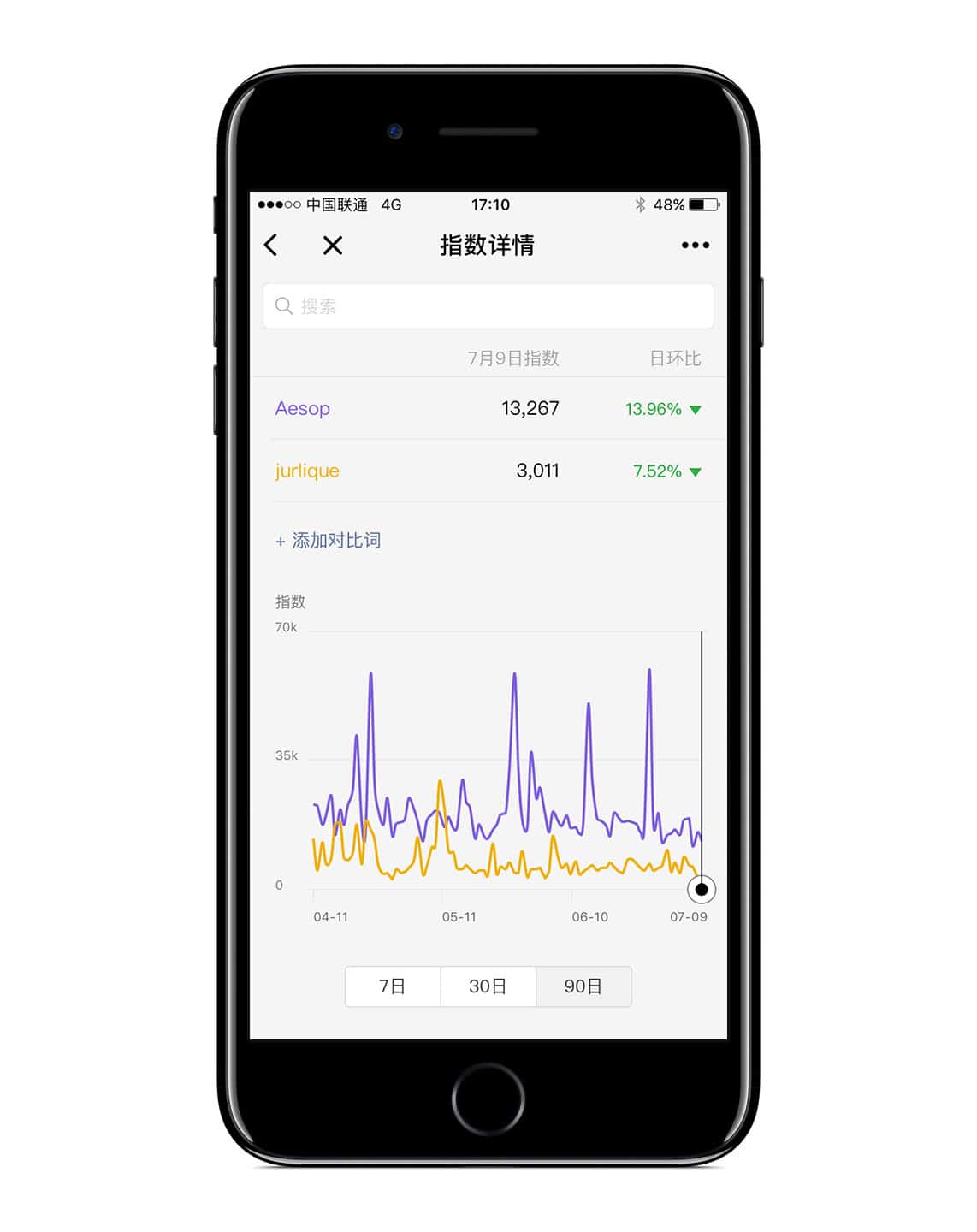
In order to check your WeChat Index, scan this mini-program QR code with your personal WeChat account and write down the name of your brand and competitors:

Criteria #3: Sogou search
In 2013, Tencent (the group which owns WeChat) purchased a 36.5% in the search engine Sogou. As a result, it’s now possible to search for WeChat social content on Sogou.
A Sogou search will give you a good sense of who’s talking about you, and what is their reach (by checking the number of views, likes and comments)
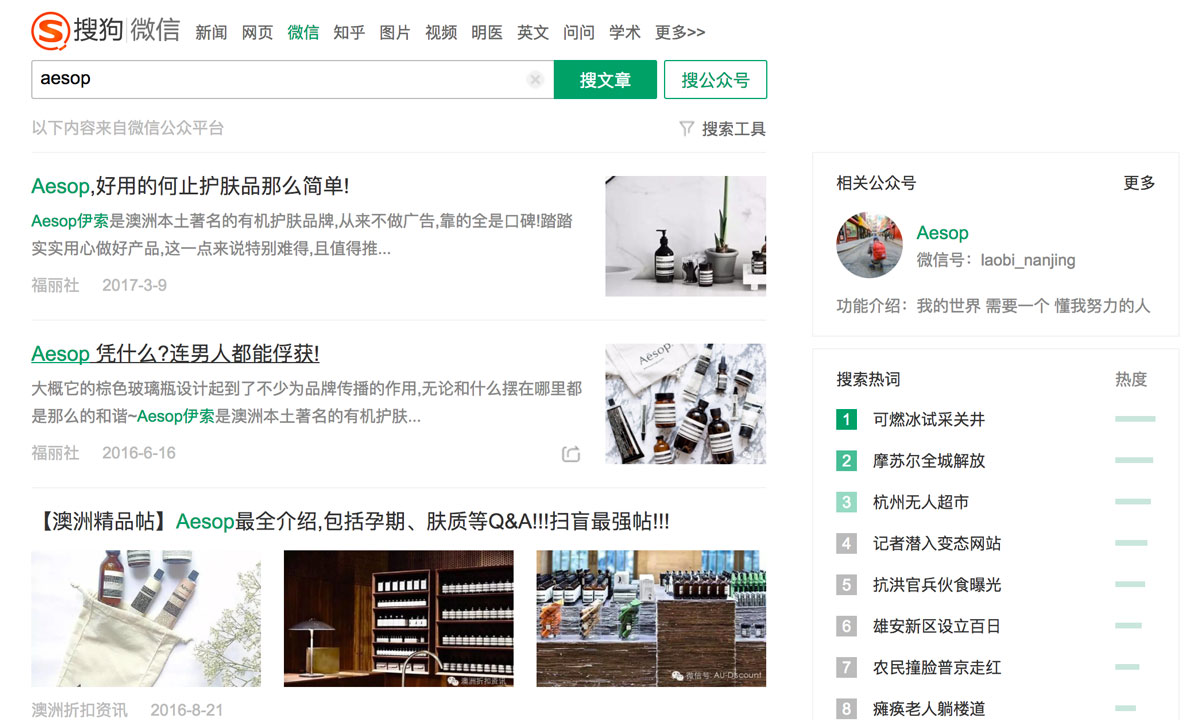
In order to figure out what’s being said about your brand on WeChat, simply head over to http://weixin.sogou.com and enter your brand name.
Criteria #4: Baidu Index
Baidu Index gives you a sense of the search volume for your brand name on Baidu. It is similar to the WeChat Index, as it does not give you a very objective measure of popularity, but is very useful to compare your brand to competitors.
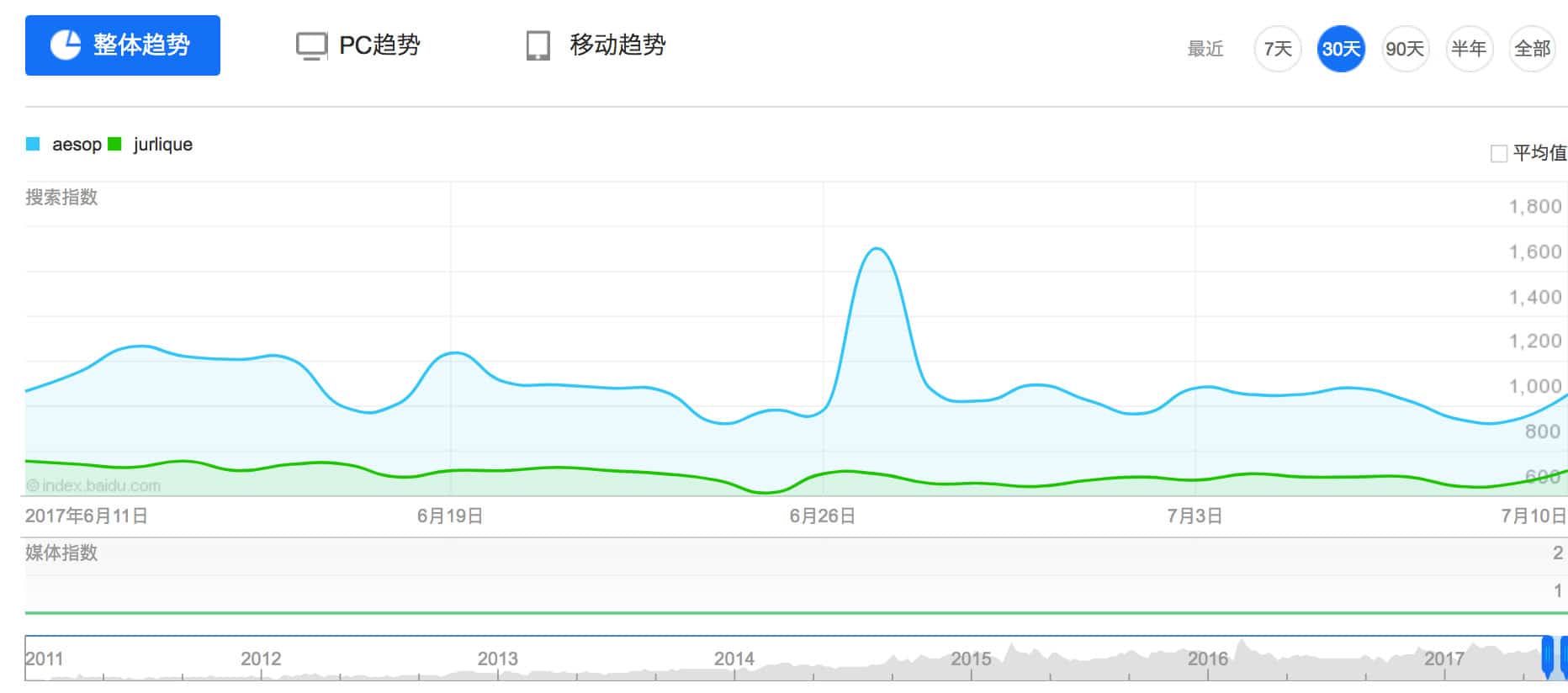
In order to check your brand’s Baidu Index, head over to https://index.baidu.com/ and enter the name of your brand.
Tmall purchasing & search trends
Tmall is a dynamic environment, and customers preferences are changing fast, as Chinese consumption habits are evolving.

Among the noticeable trends:
- Pet-related items and accessories are seeing a strong increase
- Men cosmetics are more than doubling in search volume
- One-person use appliances and prepared food are seeing massive growth
- Searches for work-out equipment more than doubled during Single Day 2017
All of these trends indicate a clear shift toward a more urban lifestyle. They reflect the social changes happening in China (at a breathtaking speed!) and might be extrapolated to other product categories.
What about Single’s Day?
If you’ve been paying attention to Chinese e-commerce, you might have heard of Single’s Day, the largest shopping holiday in China, happening on the 11th of November each year.
In 2017, Single’s day grossed some impressive figures:
- 168 billion RMB (about 25 billion USD) sales on Tmall
- 39% growth over 2016 figures
- 1.48 billion Alipay transactions
- 812 million parcels shipped from Tmall
- 127.1 billion RMB sales on JD.com (but that’s taking into account the whole week starting November 1st, while Tmall figures are only for Single’s Day)
Although some of this shopping crazy was led by large brands (Apple was the best-seller in the smartphone category, UNIQLO was the best-selling apparel brand, etc.) some smaller brands also managed to stand out.
Case in point: the best selling F&B brand was Three Squirrels, a 4-years-old startup from Anhui.
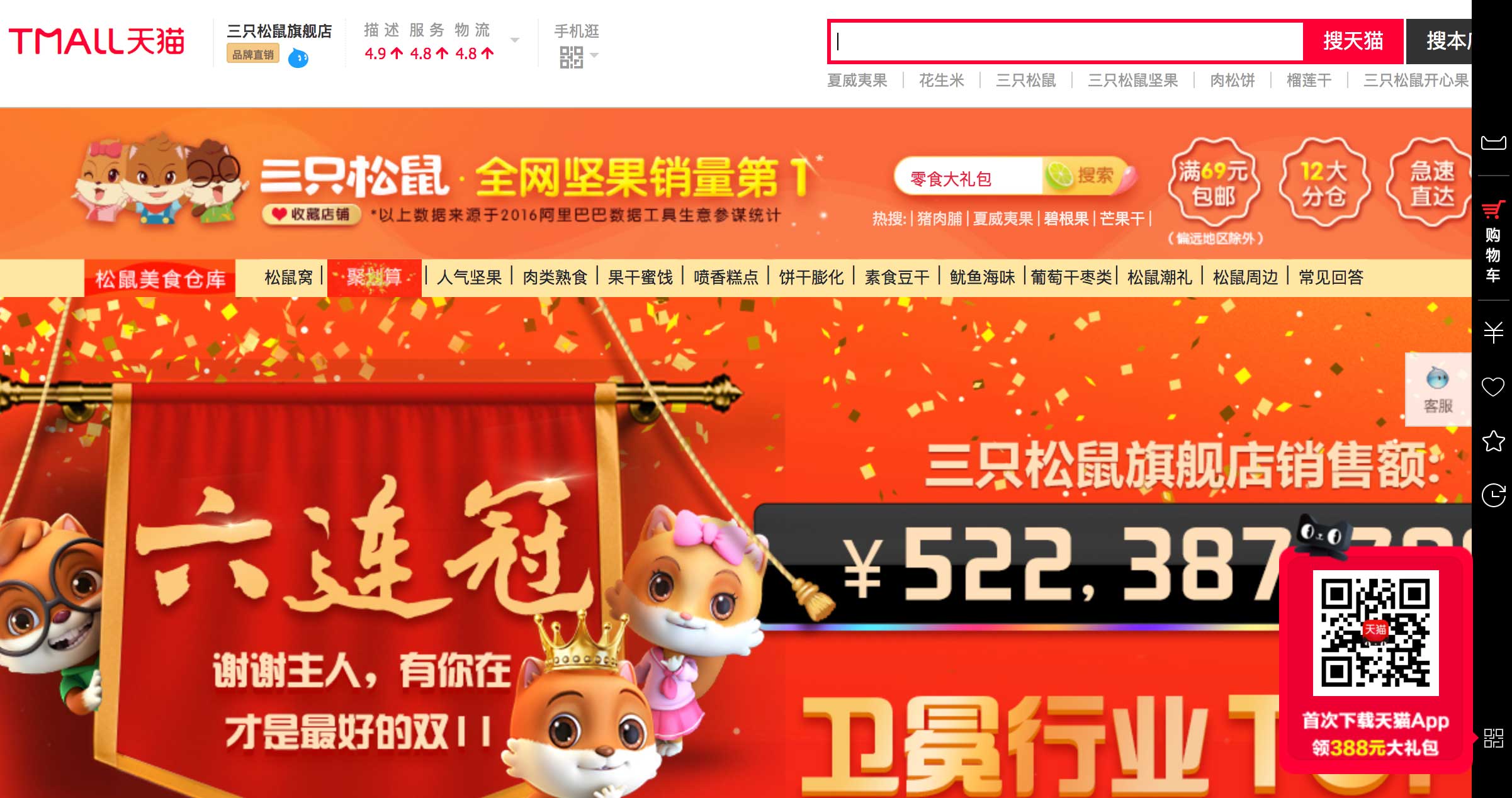
Tmall homepage of Three Squirrel, one of the best-selling brands of Single’s Day 2017
Single’s Day is actually a great way for new brands to gain traction in China. Providing limited-time discounts is the opportunity to build a following and create repeat-purchase habits that will extend their benefits through the year.
One important point to keep in mind: Single’s Day doesn’t just last one day. There is now a whole promotion week extending from November 1st to November 11th (and sometime beyond). If you want to make the most of the 11/11, start promoting earlier so you can catch customers attention (while the day of 11/11 could be too competitive/expensive to run extensive promotion)
Case studies of Tmall & JD marketing
Nattitude: driving Tmall traffic via social channels
Nattitude is a high-end Chinese shampoo brand. One bottle costs 99 RMB, which is about 3 times the amount of a traditional brand found in supermarkets.
Nevertheless, it took less than a year for Nattitude to make it into the top-15 of hair products on Tmall.
How did they do it? They used social influencers to drive traffic and endorse their product.
During China’s largest e-commerce festival (double-11, on the 11th of November), Nattitude partnered with 20 influencers in order to drive traffic to their Tmall store.
For instance, Nattitude leveraged the good integration between Weibo and Tmall by hiring Weibo influencers for the campaign. By partnering with the Weibo influencer Lisa, Nattitude managed to drive 9,000 unique visitors to their Tmall page.
But Nattitude didn’t only leverage WeChat and Weibo: they also used channels such as Zhihu (the Chinese equivalent to Quora) and Xiaohongshu (a cross-border content and e-commerce platform) to further promote and sell. This touches on a key principle of Tmall and JD promotion: you must look into the less competitive platforms (such as Zhihu or Douban) in order to drive traffic to your Tmall or JD stores.
Beyond JD and Tmall
JD and Tmall mostly dominate the Chinese e-commerce space but they are by no means the only players.
Other niche players deserve a serious look, such as:
- XiaoHongShu for cross-border e-commerce
- YiTiao for high-end products
- MeiTuan for local O2O services
- JuMei for cosmetics
- And much more…
Although JD and Tmall receive the bulk of the traffic, it is likely that leveraging platforms closer to your specific niche might be more efficient.
This is true for e-commerce as well as for promotion: when it comes to spreading the word about your product, look beyond WeChat and Weibo. You should leverage smaller platforms Douban or Zhihu in order to maximize your Return on Investment on platforms with lower competition.
Conclusion
A few key takeaways to keep in mind:
- Tmall is dominating the B2C e-commerce market in China
- If you’re selling electronics or home appliances, then JD.com is the platform to go to
- The cross-border e-commerce market is much more fragmented than the China-to-China market. Although Tmall and JD.com also have significant share, they are facing strong competition from other newer players such as VIP.com and XiaoHongShu
- Both Tmall and JD.com have cross-border offers, but they both have very high requirements ($100M+ sales outside China, usually at least $1M USD of investment for the first year, and significant popularity in China)
- In order to figure whether your brand can perform well on Tmall or JD.com, spend some time researching your current popularity in China. You can use WeChat Index, Baidu Index, Sogou, and most importantly checking Daigou sales on Taobao
- When promoting your Tmall or JD.com store, look beyond these platforms. Social networks such as WeChat and Weibo, or smaller websites such as Zhihu or Douban might be the most efficient way to drive traffic to your store.
But what if you want to take a more step-by-step approach to marketing in China? In that case, WeChat marketing might be your best option.

